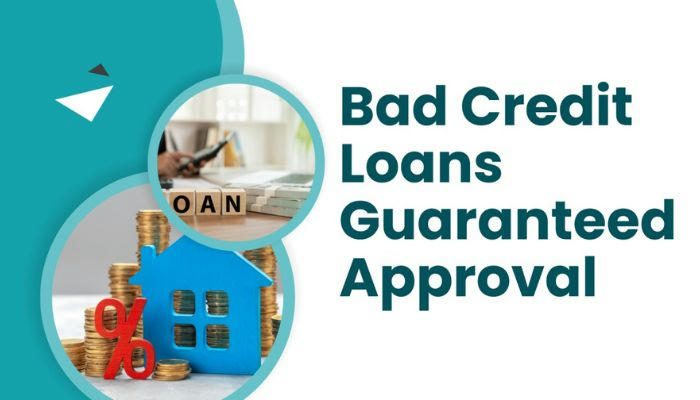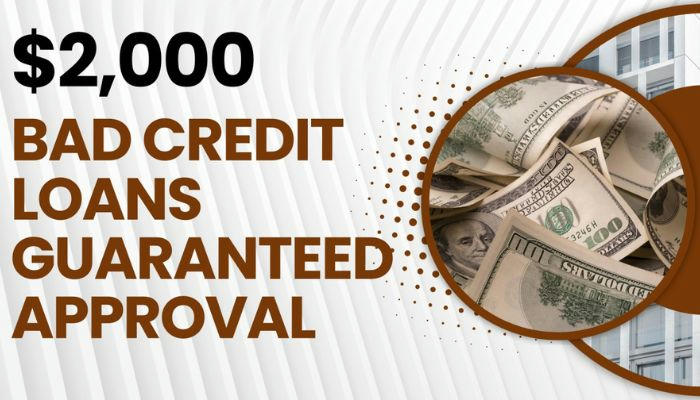Getting a loan with bad credit
Having bad credit can feel like carrying a financial burden that never goes away. Banks turn you down, credit cards reject your applications, and landlords hesitate to rent to you. But does bad credit mean you’re out of options? Absolutely not!
Millions of Americans struggle with low credit scores, yet they still find ways to get loans. The key is knowing where to look, understanding the risks, and choosing the best options. Whether you need cash for emergencies, debt consolidation, medical expenses, or major purchases, a bad credit loan can be a solution.
This guide will show you how to get a loan with bad credit, what to watch out for, and how to improve your financial future.
What Is a Bad Credit Loan?
A bad credit loan is a type of loan designed for people with low credit scores or limited credit history. Traditional banks and lenders usually require good credit, but bad credit lenders focus more on your income, employment status, and ability to repay rather than just your credit score.
These loans come in different forms, including:
Personal Loans – Unsecured loans that can be used for anything from paying bills to making big purchases.
Payday Loans – Small, short-term loans that must be repaid by your next paycheck.
Title Loans – Loans that use your car as collateral.
Installment Loans – Loans with fixed monthly payments, often easier to manage.
Credit Union Loans – More affordable loans from community-based financial institutions.
While bad credit loans provide quick cash, they often come with higher interest rates and fees. That’s why it’s crucial to understand what you’re signing up for.

Who Qualifies for a Bad Credit Loan?
Unlike traditional loans, bad credit loans don’t require a high credit score, but lenders will still look at a few important factors:
✅ Minimum Income – You need to show proof that you can repay the loan.
✅ Employment or Steady Income – Lenders want to see a stable source of income, such as a job, Social Security, or disability benefits.
✅ Active Bank Account – Most lenders require a checking account for direct deposit and withdrawals.
✅ Valid Identification– A government-issued ID is usually required.
Even if your credit score is below 600, you can still qualify for some types of bad credit loans. The key is finding the right lender and loan type for your situation.
Where to Get a Bad Credit Loan
There are several places you can turn to when looking for a loan with bad credit:
Online Lenders
Quick approval, fast funding, and flexible terms.
Companies like LendingClub, Upstart, and OneMain Financial offer loans even for people with poor credit.
Credit Unions
More forgiving loan options than banks, with lower rates.
Membership required, but often worth it for better terms.
Peer-to-Peer Lending
Platforms like LendingTree or Prosper connect borrowers with investors willing to fund their loans.
Good for people with fair credit (scores 580-660).
Payday Loan Providers
Extremely high fees, only for emergency, short-term use.
Must be repaid within a few weeks—or you risk falling into a debt cycle.
Car Title Loan Companies
You use your car as collateral, and if you don’t repay, you lose your vehicle.
Risky but may work for urgent financial needs.
Always research lenders carefully and avoid scams or predatory loans!

Pros and Cons of Bad Credit Loans
Advantages
Quick approval – Some lenders approve loans within minutes to hours.
No need for perfect credit – Even if your score is below 500, you may qualify.
Flexible use of funds – Spend on medical bills, home repairs, or other expenses.
Helps rebuild credit – On-time payments can boost your credit score.
Disadvantages
High interest rates – Some bad credit loans charge up to 400% APR!
Risk of debt traps – Payday loans and title loans can lead to a cycle of borrowing.
Hidden fees – Some lenders charge origination fees, late fees, and prepayment penalties.
Scams & fraud – Fake lenders prey on people with bad credit—be careful!

How to Improve Your Chances of Approval
While getting a bad credit loan is possible, taking a few extra steps can increase your chances of approval and get you better loan terms:
Improve Your Credit Score – Pay off small debts, fix credit report errors, and make on-time payments to boost your score.
Apply for a Lower Loan Amount – Smaller loans are easier to get approved for.
Find a Cosigner – If someone with good credit is willing to co-sign, you can qualify for lower interest rates.
Show Proof of Income – The more stable your income, the stronger your loan application.

Common Bad Credit Loan Scams to Avoid
"Guaranteed Approval" Loans – No lender can promise 100% approval without checking your finances.
Upfront Fees – Never pay fees before getting your loan.
Loan Insurance Scams – Fake lenders may claim you need to pay for "insurance" before receiving the loan—don’t fall for it!
No Physical Address or Contact Info – If a lender only communicates via email or social media, they’re likely a scam.
Pressure to Act Fast – Scammers use urgency to make you sign bad deals.
Before applying, check lender reviews and verify their legitimacy!
Final Thoughts: Should You Get a Bad Credit Loan?
Bad credit loans can help in a financial emergency, but they aren’t always the best choice. If you need cash fast and have no other options, these loans can provide relief—but make sure to understand the risks, avoid scams, and choose a lender with fair terms.
The Bottom Line: If you need a bad credit loan, choose wisely, borrow responsibly, and have a plan to pay it back—your financial future depends on it!
Need cash fast? Compare bad credit loan options today and find a lender that works for you!
